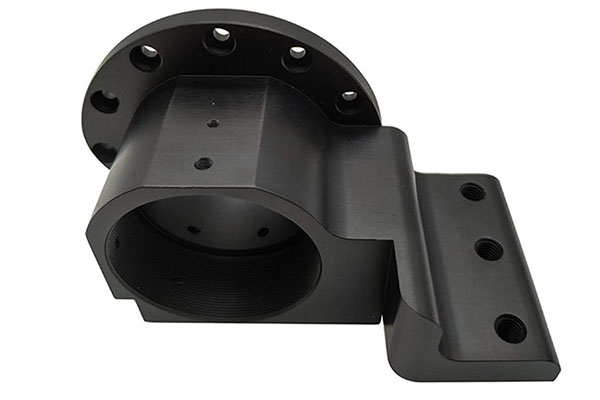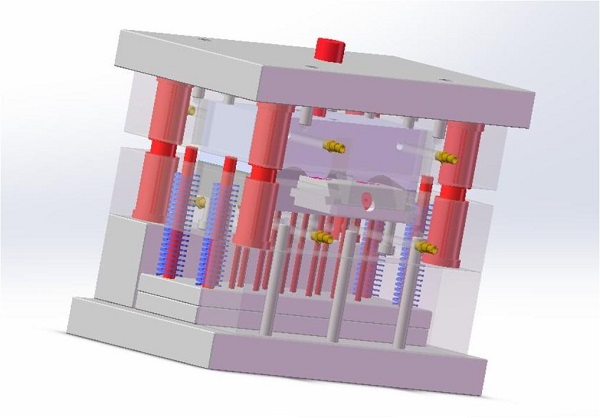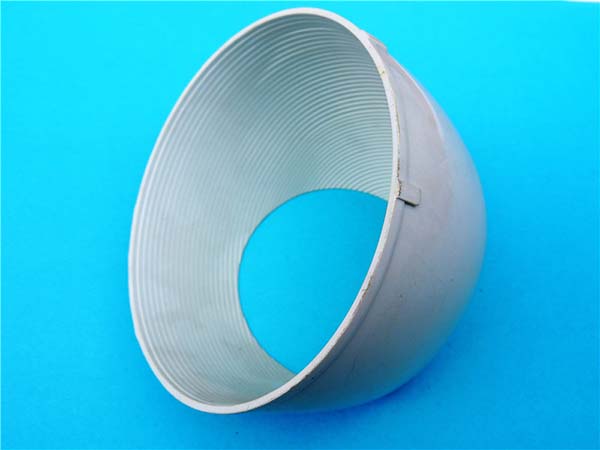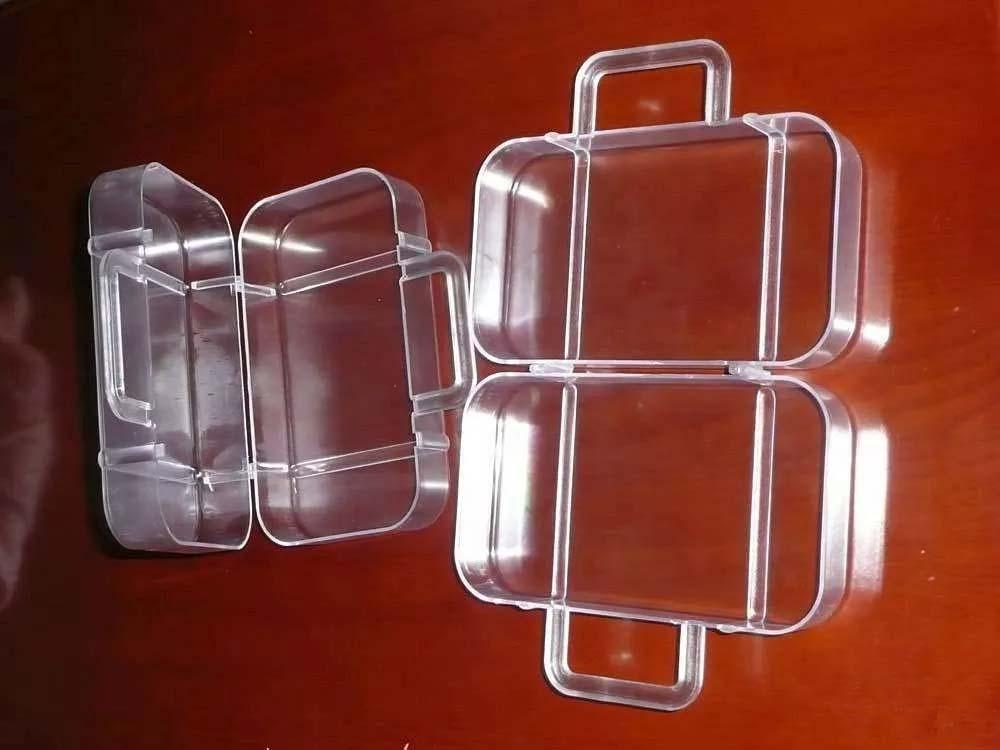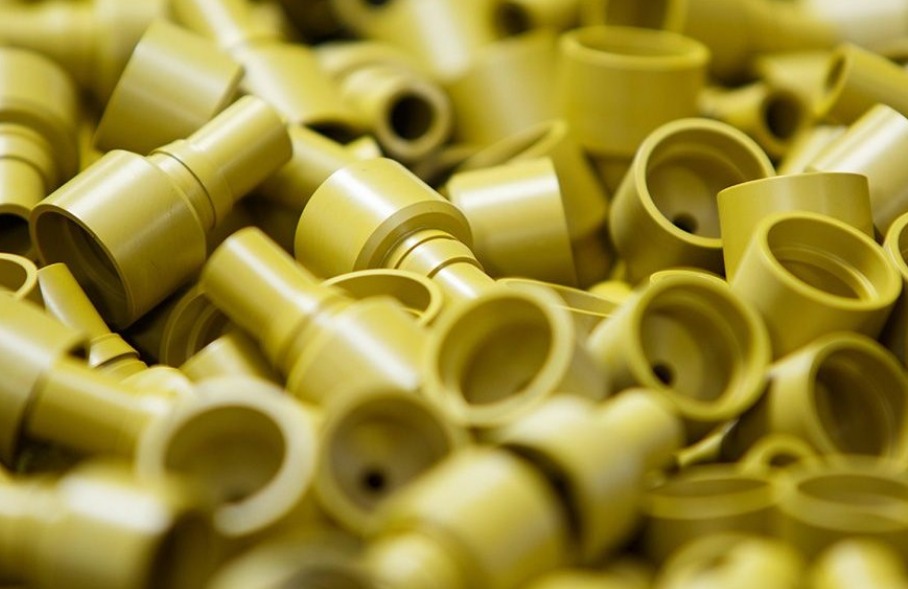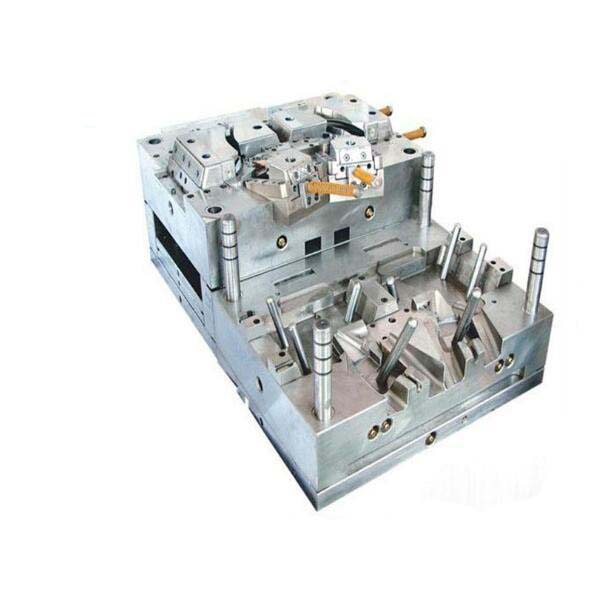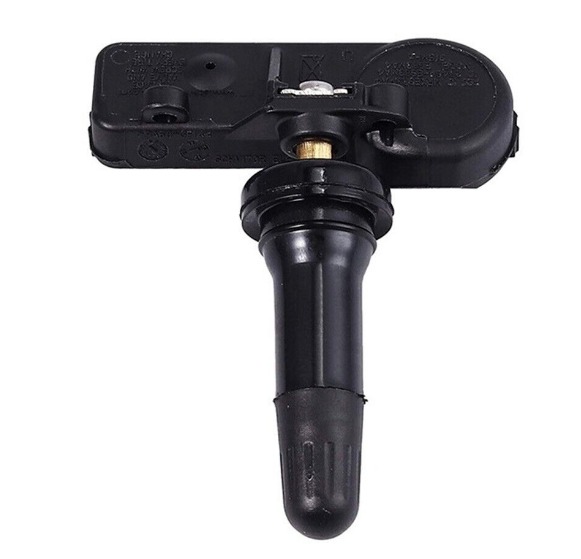Introduction
In the dynamic landscape of the automotive industry, plastic injection automotive parts have emerged as a cornerstone of modern vehicle manufacturing. Their significance cannot be overstated, as they play a crucial role in enhancing vehicle performance, aesthetics, and overall functionality.
The demand for plastic injection automotive parts has been on a steady upward trajectory. This growth is primarily driven by the global trend towards vehicle lightweighting. As the automotive industry races to meet stringent fuel - efficiency and emission - reduction standards, lightweight materials like plastics have become the go - to choice. For instance, replacing traditional metal components with plastic injection parts can significantly reduce a vehicle's weight, leading to improved fuel economy and lower emissions. According to industry reports, the global market for plastic injection automotive parts is projected to reach a value of over $XX billion by 20XX, with a compound annual growth rate (CAGR) of XX% during the forecast period.
Another factor fueling the expansion of this market is the continuous innovation in plastic materials and manufacturing processes. New, high - performance plastics are being developed, offering enhanced mechanical properties, heat resistance, and chemical resistance. These advancements enable plastic injection parts to be used in more critical automotive applications, from engine components to safety - related parts.
This article delves deep into the world of plastic injection automotive parts, exploring the latest advancements in manufacturing, the materials driving innovation, and the challenges and opportunities that lie ahead in this ever - evolving industry.
1. Material Innovations
1.1 High - Performance Plastics
The development of high - performance plastics has been a game - changer in the production of plastic injection automotive parts. One such remarkable material is carbon fiber - reinforced plastic (CFRP). CFRP offers an outstanding strength - to - weight ratio. For instance, its strength can be up to five times that of steel, while its density is only about one - fourth of steel's. This makes it an ideal choice for applications where both strength and weight reduction are crucial, such as in the construction of automotive chassis and body panels.
Another high - performance plastic gaining popularity is polyphenylene sulfide (PPS). PPS has excellent heat resistance, chemical stability, and mechanical strength. It can withstand high temperatures in the engine compartment without significant degradation, making it suitable for components like engine covers, oil pans, and exhaust systems. In addition, PPS has good dimensional stability, ensuring that parts maintain their shape and size over time, even under harsh operating conditions.
Polyetheretherketone (PEEK) is also making waves in the automotive industry. PEEK has a high melting point, outstanding mechanical properties, and excellent resistance to chemicals and wear. These properties enable it to be used in high - stress applications, such as in transmission components and bearings. It can operate reliably in extreme environments, contributing to the overall durability and performance of the vehicle.
1.2 Material Blending
Material blending is an innovative approach that combines different plastic materials to achieve unique properties. By blending two or more plastics, manufacturers can create materials that possess the best characteristics of each component.
For example, blending polypropylene (PP) with elastomers can enhance the impact resistance of PP. PP is a widely used plastic in the automotive industry due to its low cost, good chemical resistance, and easy processability. However, its impact resistance can be limited in certain applications. When blended with elastomers, such as ethylene - propylene - diene monomer (EPDM), the resulting material has improved toughness, making it more suitable for parts like bumpers and interior trim components that may be subject to impacts.
Another example is the blending of engineering plastics like nylon (PA) with other polymers to improve specific properties. Nylon has good mechanical strength and wear resistance but can have issues with moisture absorption, which can affect its dimensional stability. Blending nylon with other polymers can help mitigate this problem while still retaining its desirable mechanical properties. This blended material can then be used for applications such as gears, bearings, and electrical connectors in automotive systems.
Material blending also allows for cost - optimization. By combining a more expensive high - performance plastic with a less costly commodity plastic, manufacturers can achieve a balance between performance and cost. This is particularly important in the automotive industry, where cost - effectiveness is a key consideration without sacrificing quality and performance.
2. Manufacturing Process Improvements
2.1 Precision Molding Technologies
The advent of precision molding technologies has been a game - changer in the production of plastic injection automotive parts. One such revolutionary technology is micro - injection molding.
Micro - injection molding is designed to produce extremely small parts with high precision. In contrast to traditional injection molding, which is more suitable for larger components, micro - injection molding can create parts with dimensions in the sub - millimeter or even micrometer range. For example, in the production of micro - sized connectors or sensors in modern automotive electronics systems, micro - injection molding allows for the creation of parts with intricate details and tight tolerances. The precision of micro - injection molding can reach tolerances of ±0.01 mm or even better in some cases, compared to the relatively looser tolerances of traditional molding methods, which might be in the range of ±0.1 - ±0.5 mm for large - scale parts. This high precision ensures that these small parts fit perfectly into the complex assemblies within a vehicle, enhancing the overall functionality and reliability of the automotive systems.
Another precision - focused technology is precision insert molding. This process involves placing pre - formed components (such as metal inserts) into the injection mold before the plastic injection process. The plastic then encapsulates the insert, creating a composite part. In the automotive industry, precision insert molding is often used for parts that require both the strength and conductivity of metal and the lightweight properties and design flexibility of plastic. For instance, in the production of electrical connectors, metal inserts can be used to ensure good electrical contact, while the plastic housing provides insulation and protection. The precision of this process ensures that the inserts are accurately positioned within the plastic, with minimal deviation. This not only improves the performance of the final part but also reduces the need for secondary operations, thus increasing production efficiency.
2.2 Process Monitoring and Control
In modern plastic injection automotive part manufacturing, process monitoring and control have become essential for ensuring high - quality production. Sensors and automation systems play a crucial role in this regard.
Sensors are strategically placed throughout the injection molding process to monitor various parameters in real - time. For example, pressure sensors are used to measure the injection pressure, which is a critical factor in ensuring proper filling of the mold cavity. Temperature sensors monitor the temperature of the plastic melt, the mold, and the cooling channels. By constantly monitoring these parameters, manufacturers can detect any deviations from the optimal settings immediately.
Automation systems then use this data to make precise adjustments to the molding process. For instance, if the pressure sensor detects that the injection pressure is too low, the automation system can increase the pressure of the injection unit to ensure complete filling of the mold. Similarly, if the temperature of the plastic melt is too high or too low, the system can adjust the heating or cooling mechanisms to bring the temperature back to the desired range.
One of the key benefits of such real - time monitoring and control is the improvement in product quality stability. By maintaining consistent process parameters, the variability in the quality of the plastic injection parts is significantly reduced. Studies have shown that with advanced process monitoring and control systems, the defect rate of plastic injection automotive parts can be reduced by up to 50% compared to traditional, less - monitored production methods. This not only leads to higher - quality products but also reduces waste and production costs, as fewer parts need to be scrapped due to defects. Additionally, the ability to quickly detect and correct process issues helps in maintaining production schedules and meeting the high - volume demands of the automotive industry.
3. Design Advancements
3.1 CAD/CAM/CAE Integration
The integration of Computer - Aided Design (CAD), Computer - Aided Manufacturing (CAM), and Computer - Aided Engineering (CAE) has revolutionized the design process of plastic injection automotive parts.
CAD allows designers to create highly detailed 3D models of parts. With CAD software, designers can experiment with different shapes, sizes, and features of plastic injection automotive parts in a virtual environment. For example, they can quickly modify the design of a dashboard component to optimize its ergonomics and aesthetics. The precision of CAD models can reach down to the micron level in some advanced systems, ensuring that every detail of the part is accurately represented.
CAM then takes the CAD models and generates the instructions for the manufacturing equipment. This seamless transition from design to manufacturing reduces the risk of errors that could occur during manual translation of design specifications. For instance, the CAM system can precisely control the injection molding machine, determining the exact amount of plastic to be injected, the injection speed, and the cooling time based on the CAD model.
CAE plays a crucial role in analyzing the performance of the designed parts before they are actually manufactured. By using CAE software, engineers can simulate various real - world conditions that the plastic injection automotive parts will encounter, such as mechanical stress, temperature variations, and vibration. For example, when designing a plastic engine mount, CAE analysis can predict how the part will respond to the forces generated by the engine during operation. It can identify potential weak points in the design and suggest improvements, reducing the need for costly physical prototypes and iterative design cycles.
3.2 Design for Assembly (DFA) and Design for Manufacturing (DFM)
Design for Assembly (DFA) and Design for Manufacturing (DFM) are two important design philosophies that have significantly improved the production efficiency and quality of plastic injection automotive parts.
DFA focuses on designing parts in a way that simplifies the assembly process. For example, in the design of automotive interior components, DFA principles might involve reducing the number of parts required for an assembly. Instead of having multiple small plastic pieces that need to be individually assembled, a single, larger injection - molded part can be designed to perform the same function. This reduces the time and labor required for assembly, as well as the risk of misalignment or loose connections during the assembly process.
DFM, on the other hand, emphasizes designing parts that are easy to manufacture. This includes considerations such as the thickness of the plastic walls, the draft angles for easy removal from the mold, and the selection of appropriate materials based on the manufacturing process. For example, when designing a plastic bumper, DFM principles would ensure that the wall thickness is uniform to prevent issues like warping during the injection molding process. A proper draft angle of, say, 1 - 3 degrees, would be designed into the part to allow it to be easily ejected from the mold without damage. By adhering to DFM principles, manufacturers can reduce production costs, improve the quality of the parts, and increase the overall production efficiency.
Yigu Technology's Perspective
As a non - standard plastic metal products custom supplier, Yigu Technology is at the forefront of innovation in the field of plastic injection automotive parts. Our state - of - the - art equipment, combined with a team of highly skilled professionals, allows us to offer customized solutions tailored to the unique requirements of each automotive project.
We understand the critical nature of quality in the automotive industry. Therefore, we implement strict quality control measures at every stage of production, from material sourcing to the final product inspection. By doing so, we ensure that our plastic injection automotive parts not only meet but exceed industry standards. Our commitment to innovation and quality positions us as a reliable partner for automotive manufacturers seeking to leverage the latest advancements in plastic injection technology to enhance the performance and competitiveness of their vehicles.
FAQs
1. What are the common materials used in plastic injection automotive parts?
Common materials include ABS (Acrylonitrile - Butadiene - Styrene), known for its high strength, good impact resistance, and excellent processability. It is often used in automotive interior components like dashboards and exterior parts such as body panels. Polypropylene (PP) is another widely - used material. PP has a low density, good chemical resistance, and is cost - effective, making it suitable for parts like bumpers, interior trim, and engine components. Polycarbonate (PC) offers high impact strength, heat resistance, and dimensional stability, and is commonly used in applications where transparency and durability are required, such as in headlight lenses.
2. How to ensure the quality of plastic injection automotive parts?
Quality assurance starts with the selection of high - quality raw materials from reliable suppliers. During the manufacturing process, strict monitoring of process parameters is crucial. This includes closely monitoring injection pressure, temperature, and cooling time. For example, maintaining the correct injection pressure ensures proper filling of the mold cavity, while precise temperature control prevents issues like material degradation or uneven cooling. Regular maintenance of the injection molding equipment and molds also plays a significant role in quality control. After production, comprehensive inspection methods are employed, such as visual inspection for surface defects, and mechanical and dimensional testing to ensure that the parts meet the required specifications.
3. What are the future trends in plastic injection automotive parts manufacturing?
The future trends include continued material innovation, with the development of even more advanced high - performance plastics that offer enhanced properties such as higher strength - to - weight ratios, better heat resistance, and improved chemical resistance. The manufacturing process will become more 智能化,with the increased use of artificial intelligence and the Internet of Things (IoT) to optimize production. For example, smart sensors will be able to continuously monitor the manufacturing process and make real - time adjustments to improve efficiency and quality. Additionally, there will be a greater focus on sustainable manufacturing, using recycled plastics and reducing energy consumption in the production process.
